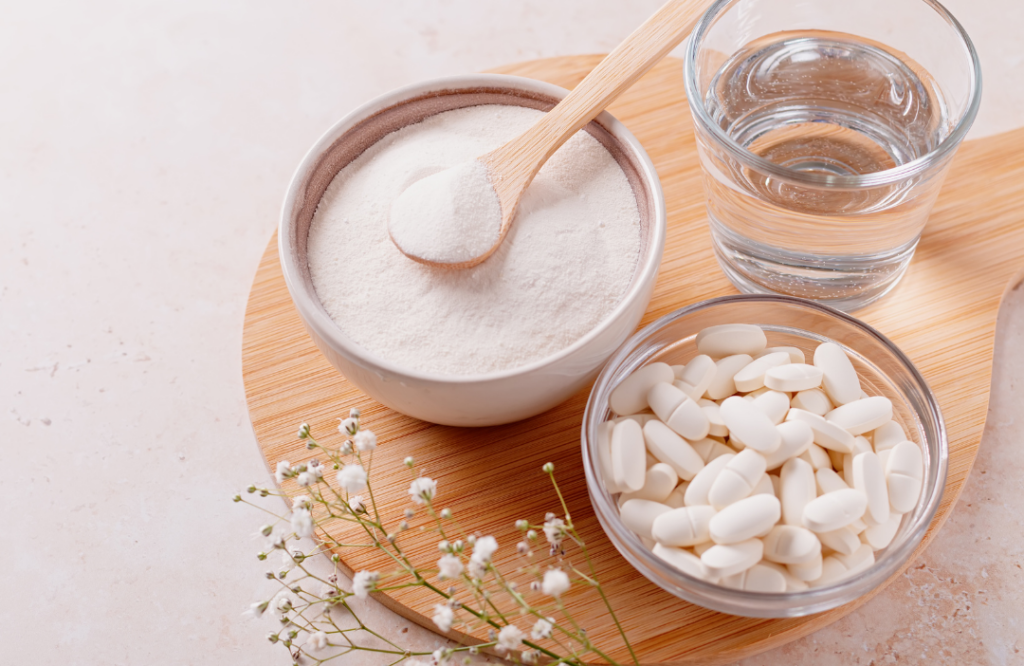The Diet Trick to Relieve Allergy Symptoms
Published on March 7, 2017 by Dr. Caitlin Gordon
Histamine Intolerance Explained
What is histamine?
Histamine is a substance found in foods, environmental allergens, and made in the body. We all have an internal histamine threshold (think of it like a bucket) that can tolerate a certain amount of histamine. Our bodies make an enzyme called diamine oxidase (DAO) that breaks down and metabolizes histamine (the hole in the bucket that drains it so it doesn’t overflow). When our histamine buckets fill faster than our DAO can break it down, we get overflow (histamine intolerance). This overflow is when we experience histamine reactions or symptoms.
 Histamine intolerance is a term used to describe the body’s reaction to histamine. Due to low amounts of DAO or high amounts of exposure, we can develop a low threshold for histamine (our bucket shrinks, and/or the drainage hole shrinks). Suddenly, it seems like we react to everything!
Histamine intolerance is a term used to describe the body’s reaction to histamine. Due to low amounts of DAO or high amounts of exposure, we can develop a low threshold for histamine (our bucket shrinks, and/or the drainage hole shrinks). Suddenly, it seems like we react to everything!
Symptoms of histamine intolerance
Symptoms of histamine intolerance include a sore throat, racing heart, depression, anxiety, headaches, sinus drainage, sinus congestion, acid reflux, migraines, hoarse voice, eczema, difficulty regulating body temp, dizziness, nausea, brain fog, hives, skin itching, chest pain, irritated eyes, fatigue, tissue swelling, and low blood pressure.
What To Do
When we develop symptoms of histamine intolerance, one of the ways we can increase our bucket size is to eat foods that are low in histamine. This reduces our exposure to histamine, so our body doesn’t become overloaded. Avoiding environmental exposure helps too (for example, avoiding spending time outside on high pollen count days, using an air filter indoors, etc), but we often have less control over this than our diet.
Which foods are high in histamine?
 It is important to eat foods that are low in histamine in accordance with your threshold. Please always remember that there is no such thing as a “histamine-free diet”!
It is important to eat foods that are low in histamine in accordance with your threshold. Please always remember that there is no such thing as a “histamine-free diet”!
Here are some general pointers:
- Avoid or reduce eating canned foods and microwave/pre-made meals
- Avoid or reduce eating ripened and fermented foods (older cheeses, alcoholic drinks, products containing yeast, stale fish)
- Histamine levels in foods vary, depending on how ripe or matured the food is
- As much as possible, only buy and eat fresh products
- Don’t allow foods to sit outside the refrigerator – especially meat products
- Everyone has their own threshold; you will need to find yours
For an in-depth list of high and low histamine foods as well as advanced information on how to treat histamine intolerance, download the low histamine diet PDF.
If you are experiencing many symptoms of histamine intolerance, or seasonal allergies, a diet composed of freshly cooked meats, fish (but not shellfish), veggies, and fruits, with rice or corn products, will be most helpful in relieving symptoms. This is a very clean way of eating that has added benefits of regulating blood sugar, lowering inflammation, boosting energy and metabolism, and reducing cardiovascular disease risk.
Your tolerance for high-histamine foods will be unique, and it will be trial and error to see which foods lead to more symptoms. On higher pollen count days, eat a lower histamine diet.
Advanced Tips for Treating Histamine Intolerance
- Boulder Acupuncture clinic Amaluna Wellness carries all the supplements listed in this article and offers acupuncture treatments for allergies.
- Taking an over-the-counter antihistamine (generic Zyrtec, Allegra or Claritin), especially the week around ovulation and pre-period may help with headaches. Keep in mind anti-histamines tend to be very drying, so drink plenty of water, as dehydration can cause headaches.
- Check the Boulder Area Pollen Counts and stay inside on high pollen days.
- For an in-depth list of high and low histamine foods as well as advanced information on how to treat histamine intolerance, download the low histamine diet PDF.
- For personalized recommendations, genetic testing, and food allergy testing, schedule a consult below.
Ready to get rid of allergies for good?
The contents of this site, including text, graphics, images, and other material are for informational purposes only. Nothing contained in this site is or should be considered or used as a substitute for professional medical or mental health advice, diagnosis, or treatment. Please schedule an appointment for personalized health advice.






